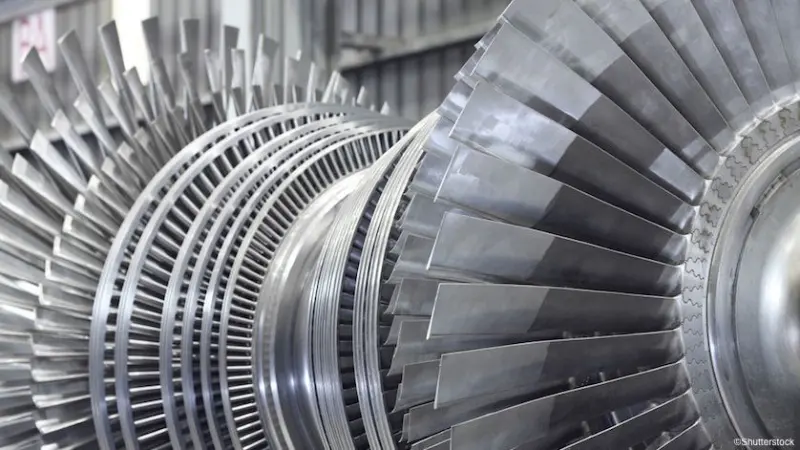Turbines are the workhorses of power generation, silently shaping the modern world. From generating electricity to propelling airplanes, these engineering marvels play a crucial role. In this article, we’ll explore the diverse world of Types of Turbines, providing you with insights and knowledge about their inner workings, applications, and their positive impact on our environment.
Understanding Types of Turbines
Before diving into the specifics, let’s understand the fundamental concept of turbines. Turbines are devices designed to convert various forms of energy, such as steam, gas, water, or wind, into mechanical energy. This mechanical energy is then used to generate electricity, propel vehicles, and perform various mechanical tasks.
The Versatile Steam Turbine
Steam turbines have been a cornerstone of power generation for over a century. They operate on the principle of harnessing high-pressure steam to drive a rotor, which, in turn, generates electricity. Steam turbines are commonly found in thermal power plants and are known for their efficiency and reliability.
Gas Turbines: Powering the Skies and Beyond
Gas turbines, often referred to as jet engines, are the driving force behind aircraft and many industrial applications. These turbines work by compressing air and mixing it with fuel to create a high-velocity exhaust that propels the turbine blades. Gas turbines are known for their power-to-weight ratio and are vital in aviation.
Hydro Turbines: Harnessing Nature’s Flow
Hydro turbines, also known as water turbines, utilize the kinetic energy of flowing water to generate electricity. These turbines are a cornerstone of hydropower plants, providing clean and sustainable energy. Hydro turbines are renowned for their ability to harness the energy of rivers and dams.
Wind Turbines: Sailing Toward a Green Future
Wind turbines have become iconic symbols of renewable energy. By capturing the kinetic energy of the wind, they transform it into electricity. Wind turbines are essential components of wind farms, contributing to a greener and more sustainable future.
A Closer Look at Turbine Efficiency
Turbine efficiency is a critical factor in power generation. The efficiency of a turbine determines how effectively it converts input energy into mechanical energy. Higher efficiency turbines result in greater power output and reduced waste.
Applications of Turbines Across Industries
Turbines find applications across a wide range of industries. They are used in power generation, aviation, marine propulsion, and manufacturing processes. Understanding the versatility of turbines helps us appreciate their significance.
Turbines and Environmental Sustainability
In an era where environmental sustainability is paramount, turbines are stepping up. They contribute to reducing greenhouse gas emissions and minimizing the environmental footprint of power generation.

Types of Turbines in Renewable Energy
Renewable energy sources like wind and hydroelectric power heavily rely on turbines. These turbines play a pivotal role in harnessing clean energy and reducing our dependence on fossil fuels.
Turbines and Electricity Generation
Electricity generation is the lifeblood of modern society, and turbines are at the heart of this process. They power our homes, businesses, and industries, ensuring a continuous supply of electricity.
Turbine Maintenance: Ensuring Peak Performance
Regular maintenance is crucial to keep turbines operating at their best. We’ll delve into the importance of maintenance routines and how they prolong the lifespan of these intricate machines.
The Future of Turbine Technology
As technology continues to advance, turbines are evolving as well. We’ll explore the innovations on the horizon and how they promise even greater efficiency and sustainability.
Conclusion
In this journey through the world of Types of Turbines, we’ve uncovered the magic behind power generation, aviation, and renewable energy. Turbines are the unsung heroes that drive progress while safeguarding our environment. Embracing these innovations is a step toward a brighter, cleaner future.
FAQ
What is the primary purpose of a turbine?
The primary purpose of a turbine is to convert various forms of energy, such as steam, gas, water, or wind, into mechanical energy for various applications, including electricity generation and propulsion.
Are gas turbines and jet engines the same thing?
While gas turbines and jet engines share similarities in design and operation, they are used for different purposes. Gas turbines are used in a variety of applications, including power generation and industrial processes, while jet engines are specifically designed for aviation.
How do hydro turbines work in hydropower plants?
Hydro turbines work by utilizing the kinetic energy of flowing water to turn a rotor, which generates electricity. They are typically installed in dams and rivers to harness the energy of moving water.
What is the environmental impact of wind turbines?
Wind turbines have a minimal environmental impact compared to fossil fuel-based power generation. They produce clean energy, reduce greenhouse gas emissions, and have a relatively small footprint on the land where they are installed.
Are there different types of steam turbines?
Yes, there are various types of steam turbines, including impulse turbines and reaction turbines. These differ in their design and how they harness steam to produce mechanical energy.
What are the key factors for maintaining turbine efficiency?
Key factors for maintaining turbine efficiency include regular inspections, cleaning, lubrication, and addressing any wear and tear promptly. Proper maintenance ensures that turbines operate at their peak performance.
